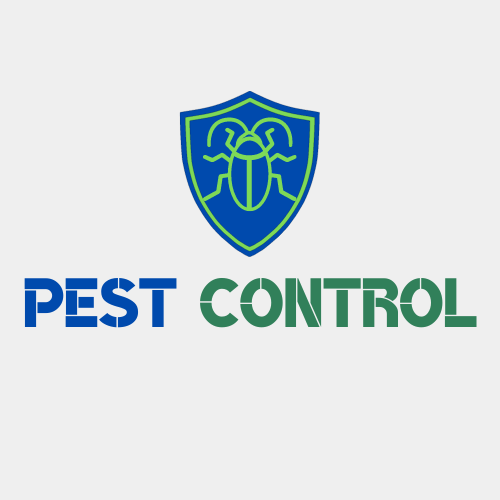The Future of Pest Control: Innovations and Eco-friendly Alternatives
In the bustling urban environment of Juárez, specifically in the 67277 area of Reserva de San Roque, residents and businesses alike are grappling with common pest issues. These problems not only impact the health and safety of individuals but also disrupt the functioning of establishments, especially in sectors like food and beverage production. As such, the need for effective pest control has never been more pronounced. Fortunately, advancements in technology, coupled with a burgeoning interest in eco-friendly practices, are creating new paradigms in pest management. This article delves into these innovations, focusing on early pest detection systems, AI-driven behavior analysis, and chemical-free pest control methods.
Understanding the Pest Dilemma in Juárez
Juárez is home to diverse wildlife and a fluctuating climate, both of which contribute to pest infestations. In particular, businesses such as small-scale bottling plants face the significant risk of termite infestations, which can severely damage wooden structures and packaging.
The consequences of pest control failures can be dire, including product contamination, financial loss, and damage to brand reputation. Therefore, pest control in Juárez has become not just an option, but a necessity. However, traditional pest control methods often rely heavily on chemical-based treatments that can pose risks to both human health and the environment.
The Emergence of Early Pest Detection Systems
One of the most promising advancements in pest control is the emergence of early pest detection systems. Traditional pest control often relies on reactive measures—waiting until an infestation is evident before taking action. This reactive approach can lead to considerable damage and expense. By utilizing early detection systems, businesses and homeowners can identify pest problems before they escalate.
These systems typically utilize a combination of environmental sensors and data analytics to monitor for signs of pest activity. For example, sensors can detect changes in temperature and humidity, which are both indicators of potential infestations. By analyzing these patterns over time, property owners gain valuable insights into pest behavior and can take preemptive actions to mitigate infestations.
Harnessing AI to Detect Rodent Behavior Patterns
Artificial Intelligence (AI) is transforming various industries, and pest control is no exception. One of the most significant applications of AI in pest management is its capacity to analyze rodent behavior patterns. Utilizing sophisticated algorithms, AI can compile and interpret data from various sources to identify trends that indicate potential infestations.
For instance, AI can process data from surveillance cameras or ultrasonic detectors that monitor rodent activity. By analyzing this data, businesses can understand the times and locations where rodents are most active, allowing them to implement targeted interventions. This precision not only enhances the effectiveness of pest control measures but also minimizes the use of chemicals by accurately identifying when and where treatment is necessary.
Introducing Chemical-Free Pest Control Methods
As the awareness of chemical pesticides’ adverse effects on health and the ecosystem grows, so does the demand for chemical-free pest control methods. These alternatives focus on natural and organic substances that are effective in deterring or eliminating pests without compromising safety.
Many businesses in Juárez are now exploring these eco-friendly pest control alternatives. For example, various ultrasonic repellents and botanical insecticides utilize ingredients that are naturally occurring and less harmful. Additionally, methods such as trap-and-release, where pests are captured and relocated, are gaining traction.
The advantages of chemical-free methods extend beyond health and safety. Many consumers today prefer brands that prioritize sustainability, and adopting eco-friendly pest control practices can significantly enhance a company’s reputation, thereby improving customer loyalty.
Sealing Entry Points to Minimize Insect Access
Preventing insect and rodent infestations is not solely about extermination; it is also about exclusion. One of the most effective strategies is sealing entry points to minimize insect access to buildings. Small gaps, cracks, and holes can serve as highways for pests looking for shelter and food.
In commercial settings like bottling plants, where hygiene is paramount, sealing these potential entry points can serve as a reliable first line of defense. Property owners can inspect their buildings to identify and seal any vulnerabilities. This can be done with materials such as caulk, steel mesh, or even specialized pest exclusion materials. Not only does this reduce the likelihood of infestations, but it can also promote energy efficiency by reducing drafts and heat loss.
Providing Termite Control Services for Small-scale Bottling Plants
In the realm of pest control, termites often receive particular attention due to the immense damage they can inflict on structures. This is especially true for small-scale bottling plants in Juárez, where wooden fixtures and pallets are common. Effective termite control should therefore be a priority for any business in this sector.
Innovative termite control services employ a combination of prevention and treatment strategies. Regular inspections can identify signs of termite activity early, while targeted treatments can address infestations before they escalate. Eco-friendly termite control options, such as borate treatments or nematodes, are now widely available and provide alternatives to harmful chemicals.
Furthermore, educating employees about the signs of termite activity—such as discarded wings or mud tubes—can create a culture of vigilance, thereby enhancing the effectiveness of pest management efforts.
Conclusion: Embracing the Future of Pest Control
In a rapidly evolving world, adopting modern pest control strategies is essential for protecting health, safety, and business operations in Juárez’s Reserva de San Roque area. With the integration of early pest detection systems, AI technology, and eco-friendly methods, pest management can become a more effective, sustainable, and responsible practice.
Businesses, particularly those in sensitive sectors like small-scale bottling plants, must prioritize these advancements to ensure a pest-free environment. By implementing proactive measures such as sealing entry points and employing chemical-free methods, property owners can mitigate risk and enhance their operations in a way that supports the well-being of both their customers and the planet.
By embracing these innovations, industries in Juárez are poised not only to tackle current pest challenges but also to lead the way toward a healthier, more sustainable future.
